This post may contain affiliate links. This just means I may receive a small commission at no extra cost to you for helping them promote their product or service. I don’t endorse any services I don’t personally use or recommend.
Welcome to my beginner’s guide to India! Because if there is ANY country in the world that needs a full guide to navigating the perils of daily life — it’s India. A mind-boggling land where nothing is easy and everything takes far longer than it should. Where bureaucracy makes even the simple task of booking a train an impossible feat. Nothing can totally prepare you for India. But this guide can *hopefully* make some of the day-to-day logistics run a little smoother and help you understand what you can expect in this incredible country.
I’ll preface this guide by saying…I LOVE India. It’s one of my favorite countries on the planet. It’s a colorful tapestry of deeply rooted religious traditions with just enough wildlife, ancient history, and exceptional cuisine to make you forget about its many shortcomings. My time in India is marked by incredible highs and frustrating lows. I did contract Giardia… twice. And yet, it’s still one of my favorite places to revisit and I don’t think I’ll ever be “done” with the country.
A Beginner’s Guide to India
Here’s what every first-time visitor to India needs to know to fall in love with the chaotic (and at times overstimulating and frustrating) country.
Best Places To Visit in India
I’m actually going to avoid this question. The truth is, India is so diverse that every single kind of traveler could find somewhere that piques their interest in the country. Some of my favorite destinations in India include…
- Ladahk. For motorcycles.
- Mumbai. For food.
- Gujarat. For lions + Jainism.
- Jodhpur. For temples and architecture.
- Agra. The Taj Mahal.
- Assam. Wildlife and unique cultural diversity.
- Kerala. Tropical south.
- Varanasi. For the Spirituality.
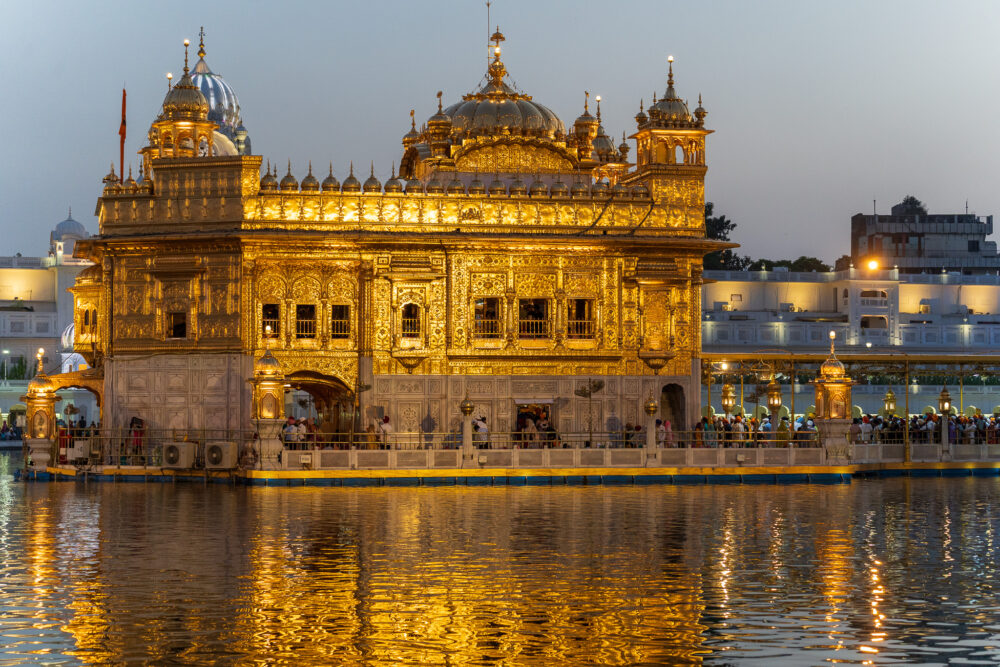
Truthfully, the list goes on and on. Where to go is entirely dependent on what you are looking for.
A Beginner’s Guide to India: When to Visit
Seasons are important to travel in India. But not as important as what region you are visiting.
If you plan to visit the South of India avoid the Monsoon Season in June-September.
Summers in Rajasthan (May-August) are boiling hot. Try to avoid this if you want to visit the desert areas.
If you’re heading to the mountains you’ll want to avoid the winters where snow makes many towns totally inaccessible.
Your Quick Guide to the Colorful Religions of India
Understanding India is crucial to enjoying it. Unlike many countries that rely on stunning scenery alone — India needs some historical context. Or at least A LITTLE background knowledge so you don’t walk around like an idiot. Here’s a crash course in the many religions of India.
While India is made up of about 80% Hindu devotees there is actually a rich tapestry of unique religious tradition throughout the country. Let’s take a quick look at some of the religions and their customs and attributes you’re likely to experience firsthand while visiting the country.
1. Hindu
The majority. One thing I love about Hinduism is that the belief is non-exclusive, which means you can also believe in other religions like Buddhism and it doesn’t change your standing as a Hindu. They believe the cow is sacred which is why you will see them freely roaming all cities and people feeding them warm chapati every morning. They have colorful vibrant temples for the worship of hundreds/thousands of gods including my favorite — the elephant-headed Ganesha. A highly tolerant religion that believes there is more than one way to “god”. This is the most prominent religion in India. Devotees will often be seen with a red bindi on their “third eye” signifying they have prayed. Women often wear colorful saris.
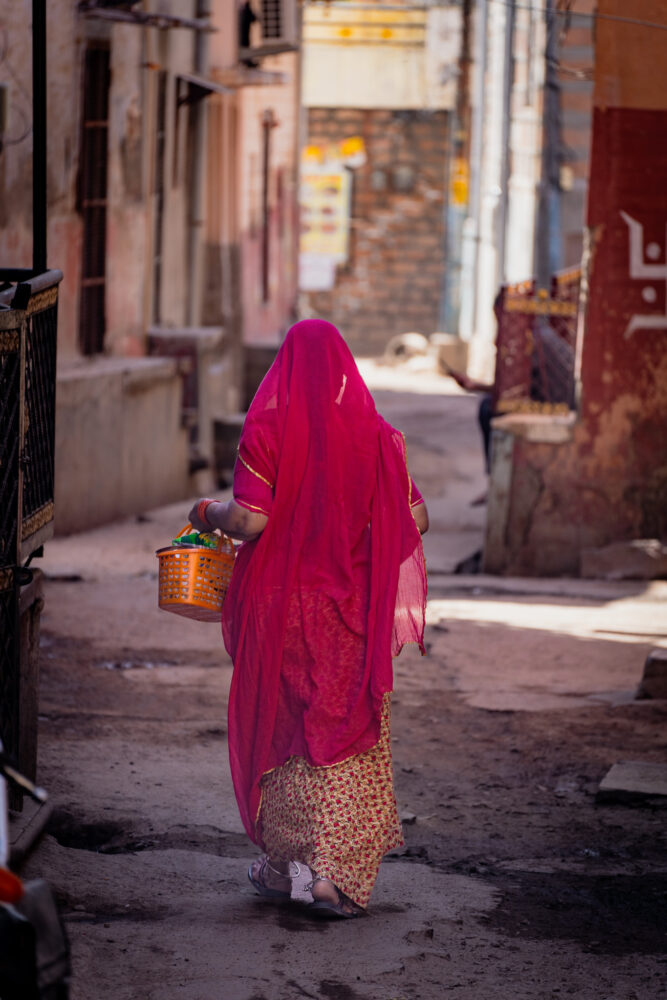
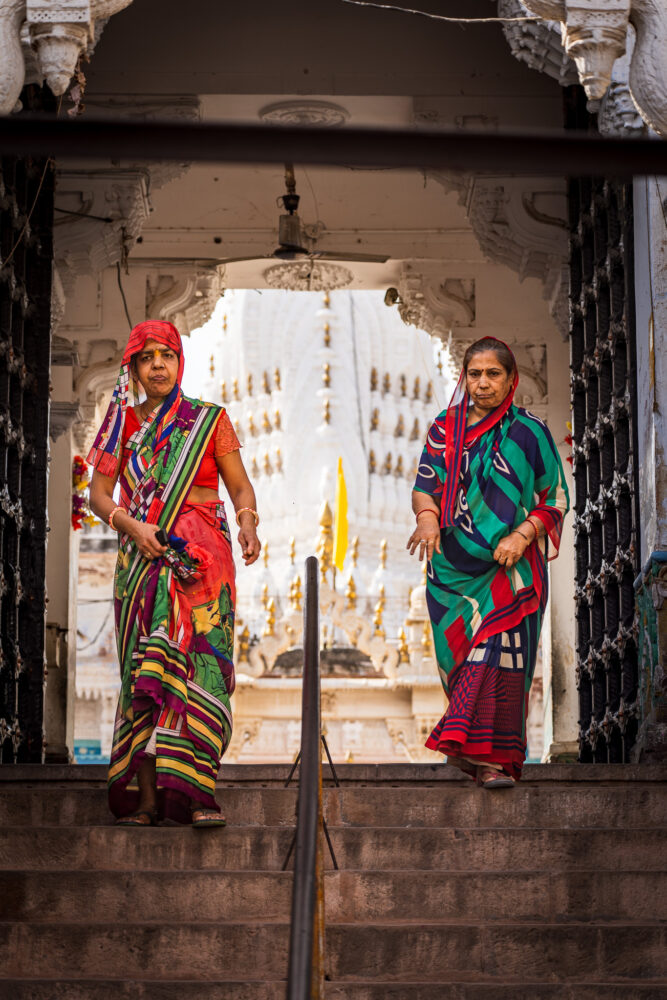
2. Jain
I noticed that unlike other religions there seemed to be a lot of female monks in Jainism. They will often be dressed in long white robes and they will also be bald or balding as they pluck out each hair one by one. Most commonly seen in Palitana, Gujarat (their holy city). A kind of Buddhist and Hindu combination with an intense focus on non-violence. They adhere to a strict vegetarian diet that includes not eating any plants that must be killed to be consumed. This means no potato, garlic, or peppers. You’ll often see “Jain menus” so be aware that the food will likely be more bland.
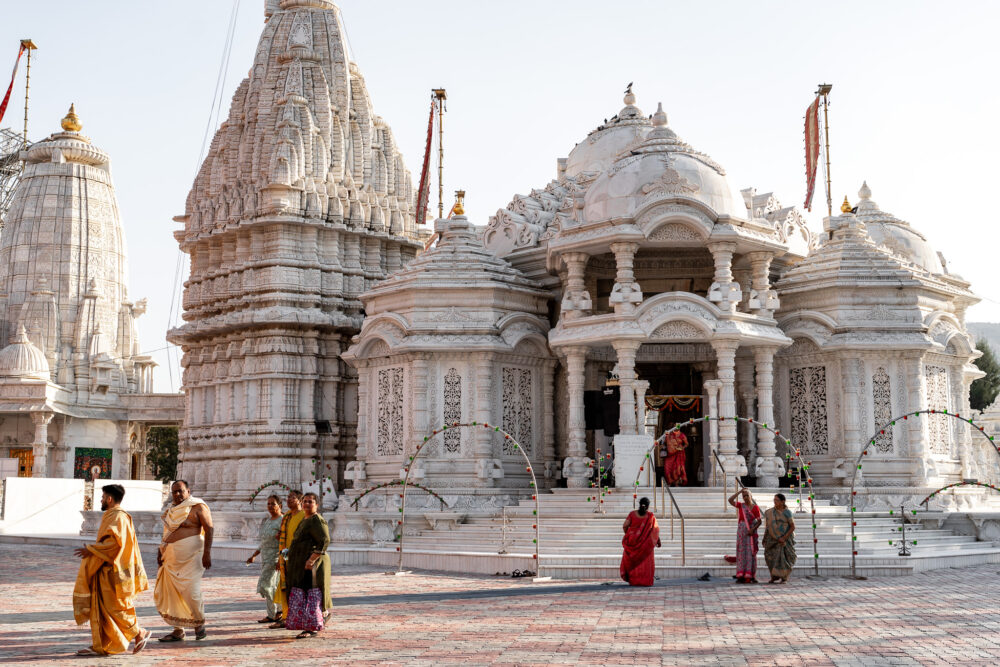
3. Muslim
About 15% of India is Muslim. The Muslim religion is split into Shia and Sunni (and others but those two sects make up the vast majority) and 85% of the Muslims in India are Sunni Muslims. You’ll notice that the heavily-Muslim neighborhoods are where you will find more meaty meals, the only place to get beef, and are unfortunately often impoverished likely due to discrimination from the government. India has a horrible track record in regard to its Hindu/Muslim relations and unfortunately, it’s only getting worse under the nationalistic Prime Minister Modi.
4. Buddhist
There are over 8 million Buddhists in India. While the red and orange robes are not nearly as prominent as they are in nearby Thailand, Myanmar, and Laos — they do still exist. Buddhists follow a non-violent path as well and believe in a life of suffering as they work their way toward spiritual enlightenment.
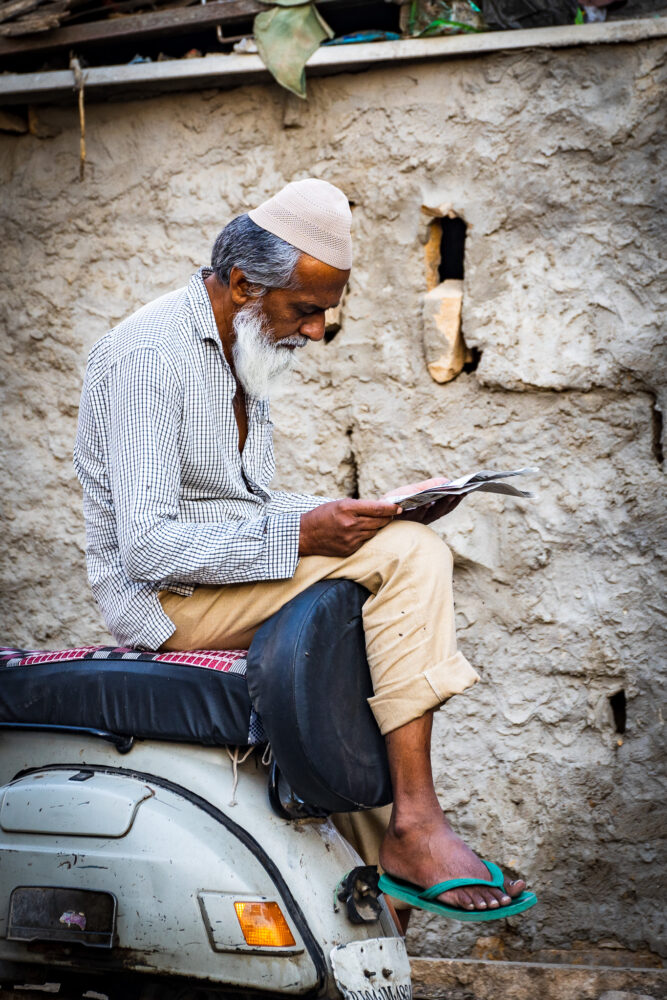

5. Parsi
This was a religion that I first encountered in India.
Parsi is a strict religious group that does not allow converts. You’ll often see signs that say “Parsee only”. This means it’s a Parsi temple and no non-Parsi are allowed. This ethnic group is a descendant of a Zoroastrian religion that came from Persia. They are solely responsible for the mixing of milk and sugar in India. Before them, Hindus refused to mix anything with the precious sacred raw milk. So we owe a big thank you to the Parsi people. If you want to learn more about the Parsi people and their contributions to foodie culture in India I highly recommend A Chef’s Tour Mumbai.
6. Sikh
This religion originated in the Punjab region of India and you’ll see the most practicing Sikhs near the Golden Temple in Amritsar, India. They wear a (often colorful) turban around their heads, a steel bracelet on their wrist, and provide food for millions of people for free every day all over the world. They are the true good samaritans of India.
This is not an exhaustive list. There are dozens of other religions in the country of more than 1 billion individuals. But these are the 6 you will encounter most often.
A Brief History of India for First-Timers
Now that you understand the religions at play in the country, let’s talk about colonization. Briefly. These bullet points will help you understand what India went through in its quest to become an independent country.
- Before colonization, India was a thriving country filled with hundreds of varied ethnic groups.
- In the 1800s India was colonized by the British.
- It regained its independence in 1947.
- Gandhi played a large part in this emancipation and that’s one of the reasons he is so revered in India and you’ll see his face on every single rupee note.
- When the Brits left India they split the country into two pieces. Pakistan & India. The Brits drew the borders and this royally fucked things up. What we know today as Bangladesh was also designated East Pakistan.
- Much of India’s unrest near its borders today stems from the Brit’s stupid careless border drawing.
- India today is a country of over 1.3 Billion people and still is regarded as one of the most diverse democracies in the world with over 2,000 ethnic groups.
Read More: If you’re interested in Pakistan be sure to visit the Wagah Border or plan a perfect month in the country with my Pakistan Itinerary.
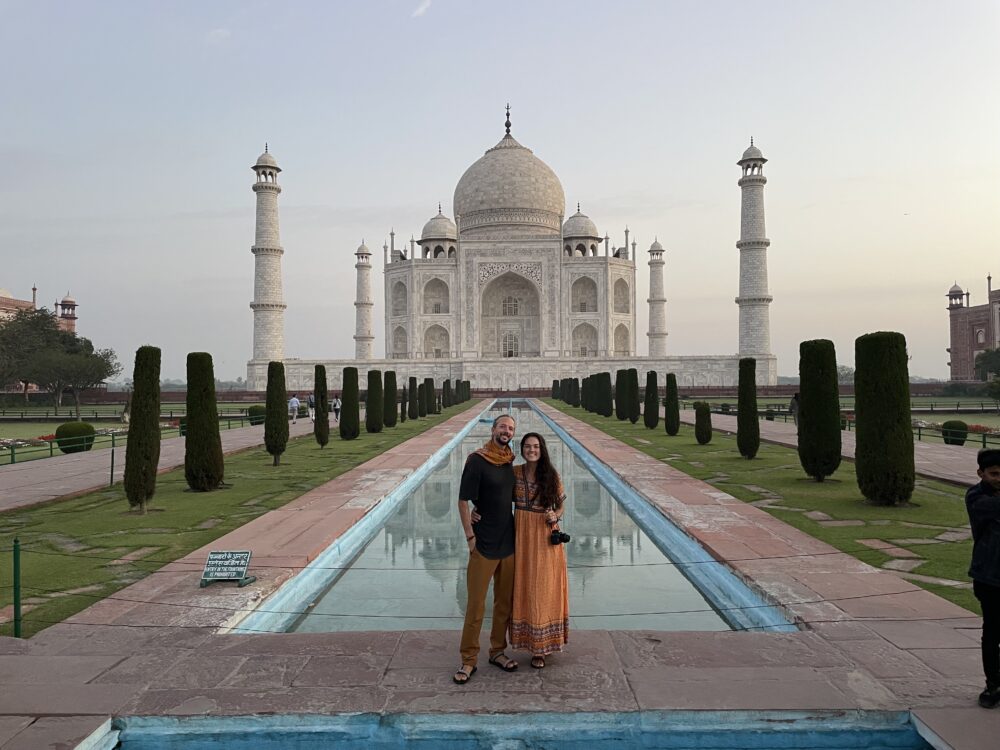
What to Expect on Your First Visit to India
Expect crowds. A mountain of overwhelm. Expect massive amounts of trash and pollution. But also expect that all that mess is totally worth it. This is not to say India is not a “modern” developed country. There are lots of chic cafes, 5-star hotels, posh restaurants, and luxurious high-rise skyscrapers— it’s just all these things exist within a decent amount of garbage.
I’m sure I’m going to get some flack for the way I describe this country. But the truth is if you spend any time here at all you’ll see both the best and worst of humanity. Just remember that India is also one of my favortie countries in the world.
India is a contradictory place. No matter what I say about the country, the opposite is also true.
You’ll witness extreme poverty that will break your heart within the same street as the most expensive house in the world. I think what makes India unique is the lack of division between the elite and the poor. Both groups exist in the same spaces — always. In the US, we develop suburbs that act as an enclave for the rich. In India, the barrier is removed. Or at the very least, far blurrier. I think that’s a good thing in a lot of ways. But it can be incredibly jarring to those unfamiliar with the country or on their first visit.
It won’t be easy and it won’t always be comfortable. But that should be exciting. If you can tackle India— you can handle anywhere.
One of the best things about India is that people will usually go above and beyond to help you out. You just might have to ask for their assistance.
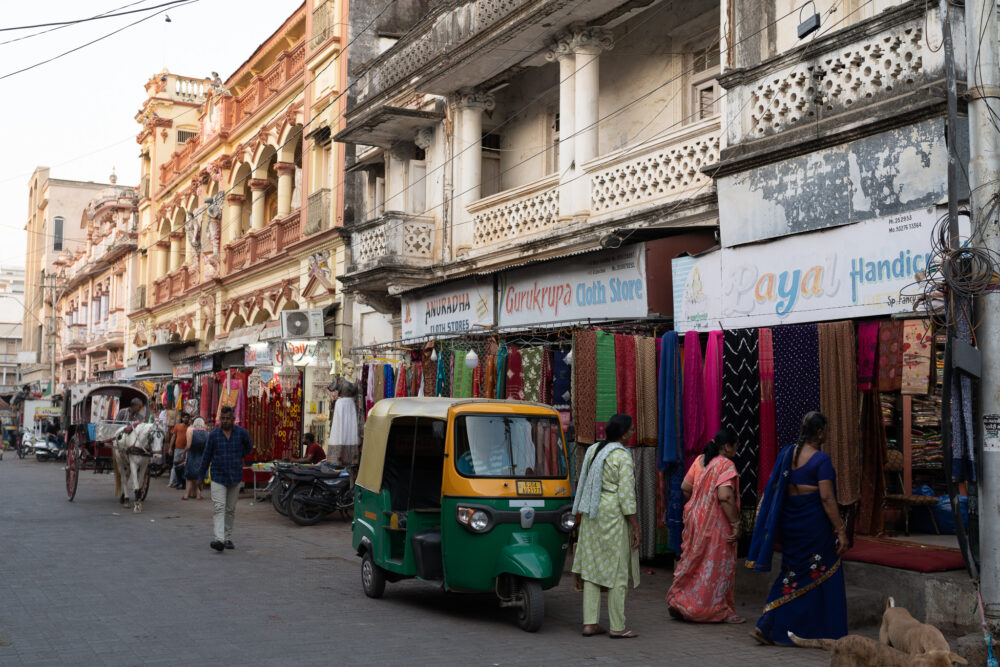
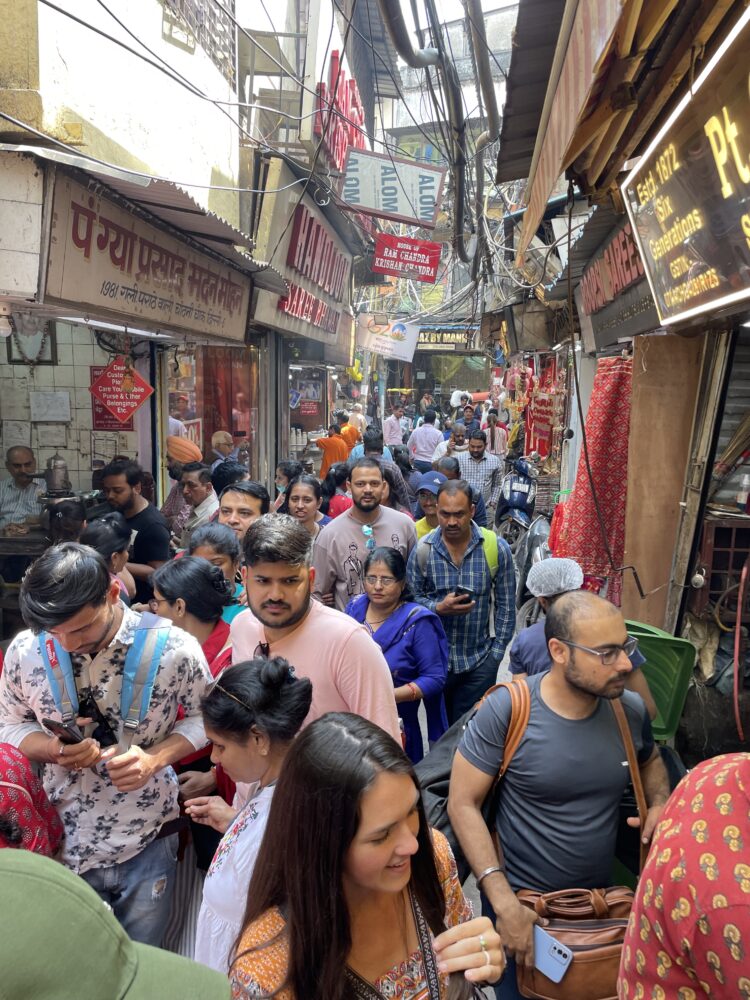
Cost of Travel in India
We spent $30 per day for two people the first time we visited India. The second time, $45 for two per day. This makes it one of the most affordable destinations we’ve ever traveled to. Alongside Vietnam and Indonesia (not Bali) that is.
You can expect the average double room in a budget hotel or guesthouse to cost around $10-20 per night.
Food is the big money saver. Don’t be surprised to get an entire delicious meal for two for $1 or $2. Street food in India is a must but even eating in restaurants (as long as you stick to Indian cuisine) will never cost you more than $5 per person.
Transport is also very cheap. There are domestic flights for $30 (sometimes), super cheap trains, and buses of varying comfort.
Paying for things in India
Cash is King. Almost all your transactions will be done with cash. Fortunately, ATMs are widespread throughout the country and access to cash is fairly easy (unlike in neighboring Pakistan).
SBI is the most reliable bank to withdraw money from. You can usually take 20k (rupee) out of ATMs and there is no fee. Just make sure to have a card with no international transaction fees and always choose “without conversion” when asked. If, for whatever reason, the atm won’t give you cash it’s because the network is down on that one. No matter what it says. It often told me I had “met my withdrawal limit” causing panic — but I had not. It was just the atm.
Avoiding Scams in India
I know I mentioned that the scams aren’t that bad in India, but they still exist and are worth addressing. There are 5 big ones.
1. Child Beggars and other Vagrants
This is the big one. I’m going to sound heartless for a minute, but I promise I’m not.
Do not give them money or unopened food from a shop where you are buying snacks.
The begging children and women in India are under the watchful eye of gangs — giving them money encourages these rings of criminals to continue utilizing them. I caved and offered snacks often until an Indian man told me that the children usually sell them back to the shop owner for a cheaper price.
Giving them anything just encourages them to target tourists. Instead, say a firm no, look away, and move on. If that doesn’t work you can engage with the kids on a human level. Compliment their anklets, joke around with them, and be kind.
Hot Tip: If you want to give them food, give them open things they cannot sell.
2. The Taxi That Wants You Is Not The Taxi You Want
The taxi driver that desperately wants you…desperately wants to rip you off. You’ll most often get this when you’re getting off some kind of public transport. Just blow past all the people waiting like cats over a mouse at the bus doors and walk a block or two. From here, you’ll get a much more reasonable deal.
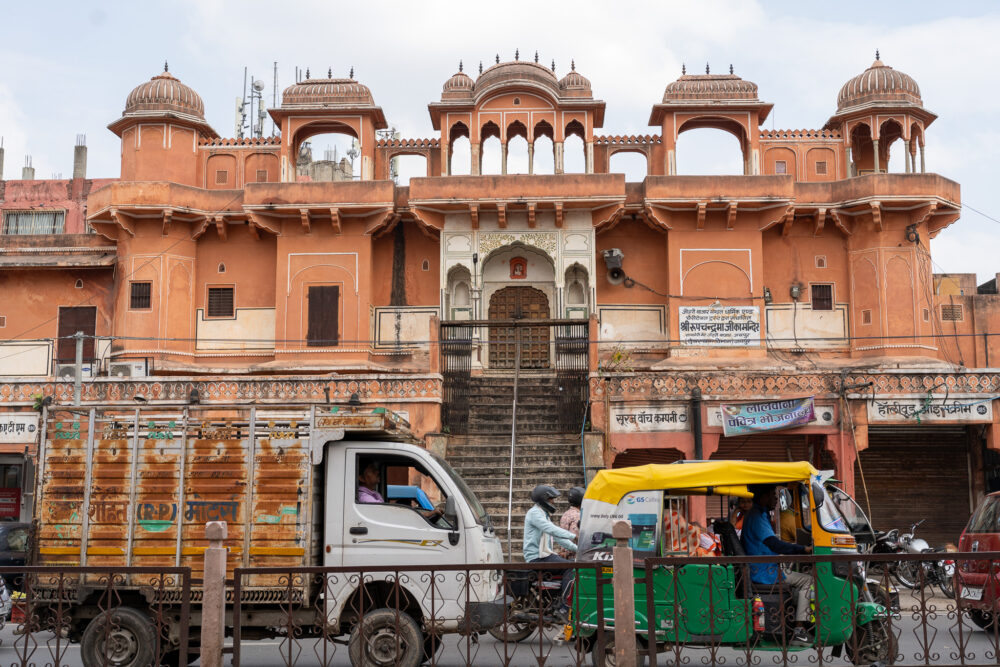
3. Tour Guides (or anything else for that matter) are Rarely Ever Free
At famous sites, people will often approach you and begin giving you a full tour with loads of information. They WILL ask you for money at the end of this experience. Be firm that you don’t want a tour/bracelet/flower/whatever item they are offering to gift you.
4. Priests of Pushkar
This is a very specific but important scam to avoid. Pushkar is a holy city and some white-robed scammers have set up near the lake to lure tourists into their clutches. These “priests” will come to you with a flower, place it in your hands, and guide you to the river to pray. They will then ask for $100 USD as a donation or threaten police involvement. Just don’t accept the flower.
5. Purchase All Your Own Transportation Tickets
One common way to get scammed is to allow a stranger to purchase your bus ticket for you. Duh, you might think. But it happened to me.
Here’s exactly what occurred. I strode up confidently to the bus ticket booth to find it closed. A man standing nearby said he could call the bus company directly for me since I had no SIM card. I called and was told the price of the ticket which was exactly what I originally saw online. The man said he would drive me in his rickshaw to the station and we could pick the ticket up on the way. This is what we did.
Here’s the catch. The bus he dropped me off at was MOST DEFINITELY NOT the tourist-friendly bus I was price-quoted for. This bus had no a/c, was overcrowded, was super late, and stopped very frequently. I also found that I had paid about 10x what the other travelers had to be on the same bus. Clearly, the man had charged me the tourist bus price, bought me a local ticket, and pocketed the difference, and I was none the wiser.
What to Prepare Before Your First Trip To India
These are the quick things you need to know before you even set foot on Indian soil.
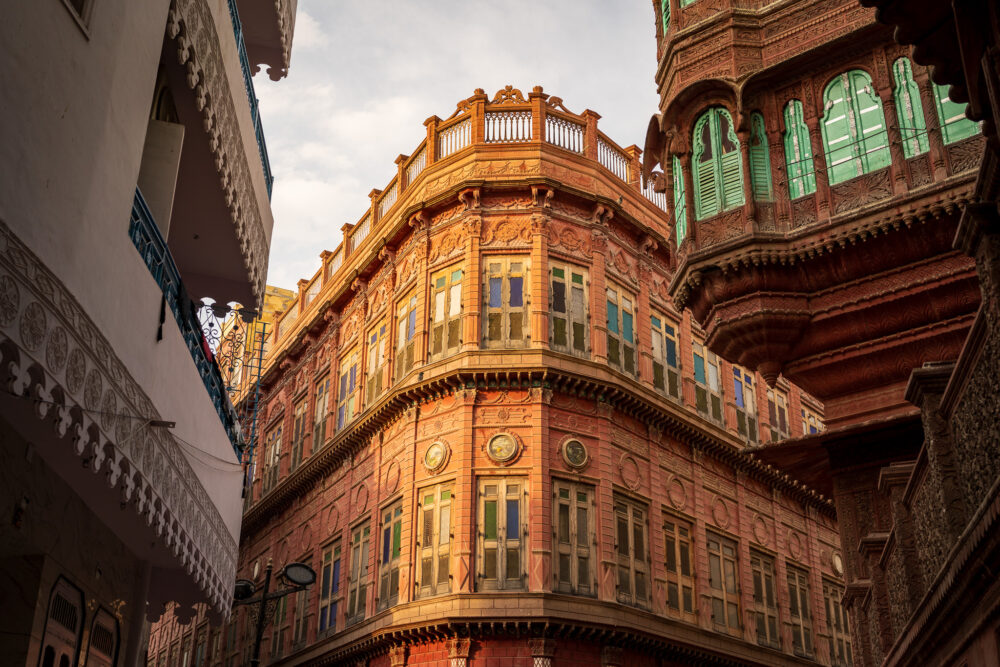
1. Travel insurance is recommended.
I’ve been hospitalized in India once and should have been a handful more times than that. The good news is medical care is very affordable. But just in case you maim yourself in some capacity, it would be a good idea to have health insurance so you can go to the private hospitals.
I use Seven Corners as an American. Our travel insurance options are pretty limited when it comes to affordable long-term plans.
2. Seasons in India Matter
If you plan to visit the South of India avoid the Monsoon Season in June-September.
Summers in Rajasthan (May-August) are boiling hot. Try to avoid this if you want to visit the desert areas.
Read More: My full guide on What to See and Skip in Rajasthan.
On the opposite end of the spectrum, Ladakh province in North India is totally closed and inaccessible in the winter months of November to June.
3. You Need A Visa in Advance to Visit India
IN ADVANCE.
Not on arrival. It only takes a day or two usually to receive your E-Visa but give yourself a week. Just in case.
Don’t buy your visa from any website other than the official Indian government website here. It should cost $40 if you are an American. Don’t get scammed by IVisa.
4. Drones are *mostly* not allowed in India
India has a drone blocker that won’t let your drone go above 20 feet off the ground in most areas of the country. Weirdly, tripods are almost never allowed inside major tourist attractions as well. This includes the Taj Mahal. Don’t make the mistake of accidentally packing one.
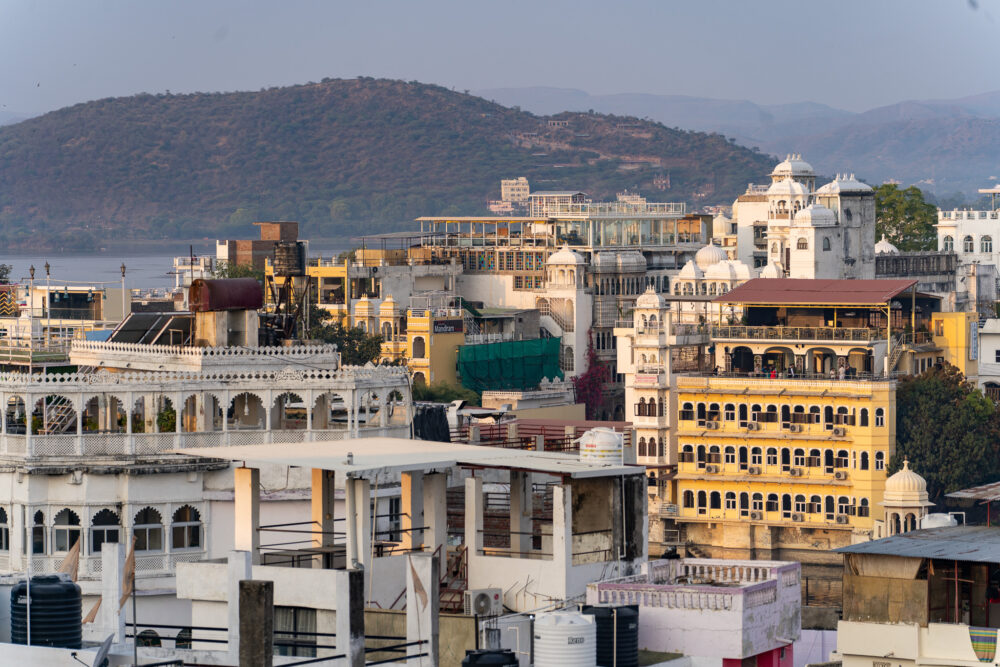
Apps you need to download for India
This is going to seem like a lot, but it’s pretty necessary. I’ll explain why.
- Maps.me. For navigating without the Internet.
- Blabla car India. This is like Uber for hitchhiking. Great for medium-length distances.
- Ease My Trip. For booking buses and trains.
- Uber. For within city transport or short distances.
- Red Bus India. Bus ticket booking.
- Ixigo. The best app for booking your train tickets.
- Goibibo. A great booking platform in India. I used it mostly to browse prices.
- Booking.com or Hostelworld. The best two apps for finding budget-friendly hotels with trustworthy reviews.
- WhatsApp. This is how 99% of people in India communicate. Phone calls and texts.
- Currency. My go-to app for up-to-date currency conversion. Love that it works offline.
- Trip Coin. This is how I budget all my trips. I track everything on TripCoin.
Quick Packing List for Any Trip to India
I’m not doing a full packing list but you should bring these items as they can be difficult to find once on the ground in India.
- Pepto bismol. I’m not sure why, but they have nothing like this medicine in the country. So stock up now.
- Sunscreen without skin whitener. Most creams have it in Indian shops.
- Deodorant that doesn’t roll on.
As far as clothing goes, bring long pants or dresses, layers, and comfy walking shoes for walking around that preferably, are closed-toed. I’ll dig into what you should wear more in the women’s dress code section.
Handy Everyday Packing List for India
This is not a packing list FOR India. A list like that depends on personal preference, destinations, and time of year. This is the stuff you should ALWAYS keep on you when in India. Either in a small backpack, purse, or fanny pack when you head out to explore for the day.
- Toilet paper/ kleenex. Bathrooms have none and destinations are often dusty. You’ll need it to do your business and blow your nose.
- Sunscreen. Sunglasses.
- Pepto. I recommend popping a pill the moment you start to feel a little queasy.
- Extra cash + atm card. Never catch yourself totally out of cash. Often times it will take a few different ATMs to find one that actually has cash.
- Patience.
- Always have small change with you for bribes. Small rupee notes are valuable when you want to tip someone or gain access to a closed-off area of a tourist sight or temple.
Is India Safe for Solo Female Travelers
This is the question that I’m asked over and over again about India.
And if I’m being honest, I’m the wrong person to answer it. Because alas, I am not a solo female traveler. But regardless, I have been groped several times in the country and experienced more than a handful of overly zealous men who thoroughly creeped me out and made for an uncomfortable bus ride or two.
This does not mean that I DON’T think India is good for solo travelers. I just think that if you are a woman traveling in India you may need to have a thicker skin and be able to ward off some unwanted attention and affection a time or two.
If that sounds like your personal nightmare or something that is going to completely and totally ruin any chance of you enjoying the country…then maybe India is not the place for you.
My gropings were few and far between and generally happened when I was new to the country and wore shorts on occasion in crowded markets. Not something I recommend. The feminist in me thinks that it doesn’t matter what you wear, it’s never an excuse for sexual assault. But the reality is, in India (and elsewhere), what you wear *can* affect how you are treated by men.
The good news? If you do get groped or harrassed in any way…freak out on them. Yell at them, curse at them, make a scene. Confrontation is accepted in India and you’ll get the crowd on your side which is good for safety reasons.
Dress Code in India for Women
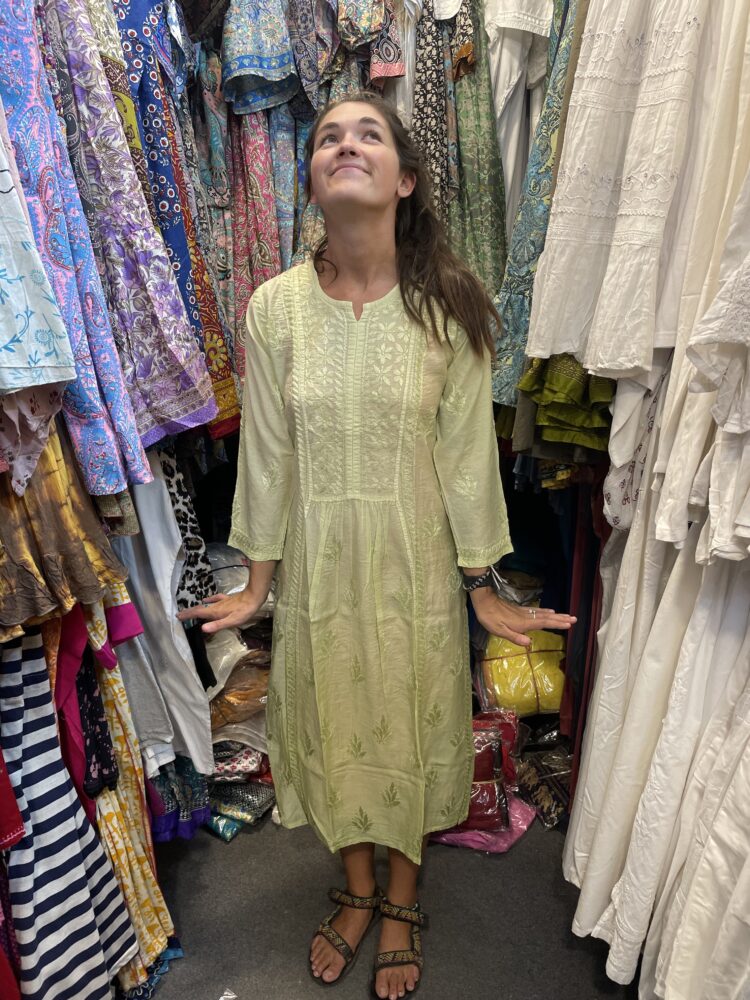
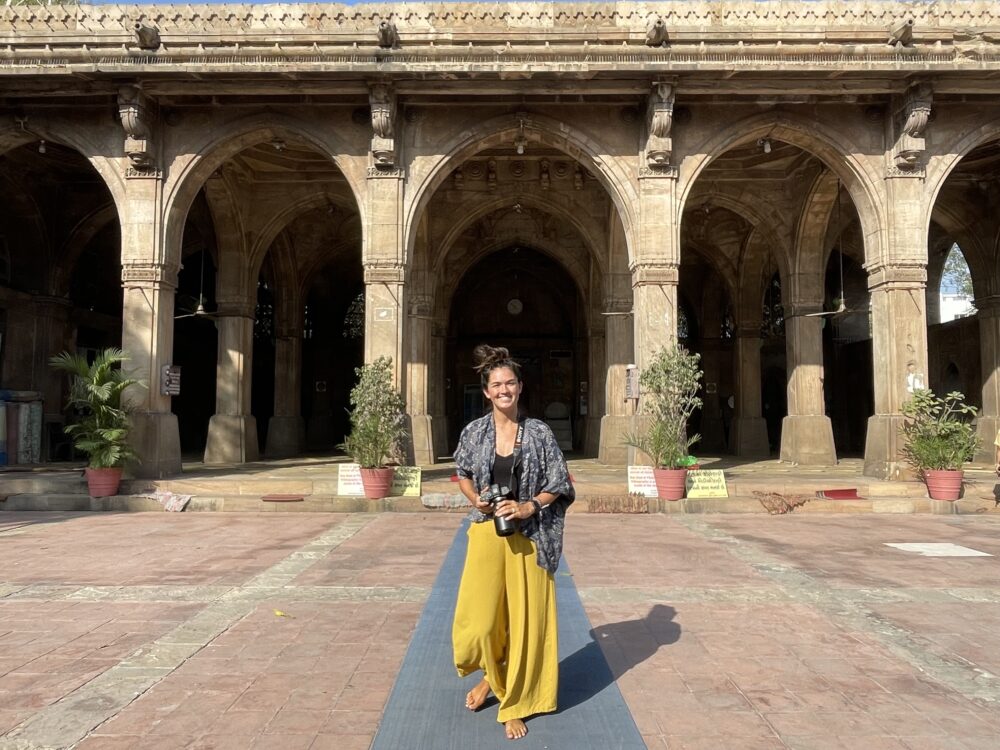
- For women legs and butts are infinitely more seductive than stomachs and breasts in India. This means to get less unwanted attention DO NOT WEAR SHORTS. Obviously, in Goa and the other beachy areas of the South, this is different, but everywhere else this rule stands. Loose-fitting longer dresses and skirts are best. You can wear jeans or leggings too. Tank tops are great. Crop tops are even fine. Like I said breasts aren’t that “risqué”.
- For temples and holy places, you will need an outfit that covers your shoulders and knees. It also should be loose fitting. Men need to cover their shoulders and knees too.
- Bring light loose clothing because of the heat.
Getting a SIM Card in India
You probably need a SIM Card in India.
It’s very difficult to navigate otherwise. If you don’t have an E-SIM you should have your hostel help set you up with a local Indian SIM. Usually, they last for 30 days and are rechargeable. But getting that first one is a real doozy. You need the help of an Indian local.
If you don’t mind paying extra you can get an airport SIM card as soon as you land.
The reason it is vital you get a SIM Card is because you can’t book the trains or buses in India online without one. But I’ll get to the transportation tips in India a little later.
How to Avoid the Crowds in India
A pointless endeavor.
But I get it. It can be difficult to enjoy the scenery with so many people milling about.
My biggest tip is to visit places as early as possible — always. No one likes to wake up early, but everyone loves a sunset. Also, stay away from weekends. Temples will be filled to their intricately carved ceilings on weekends.
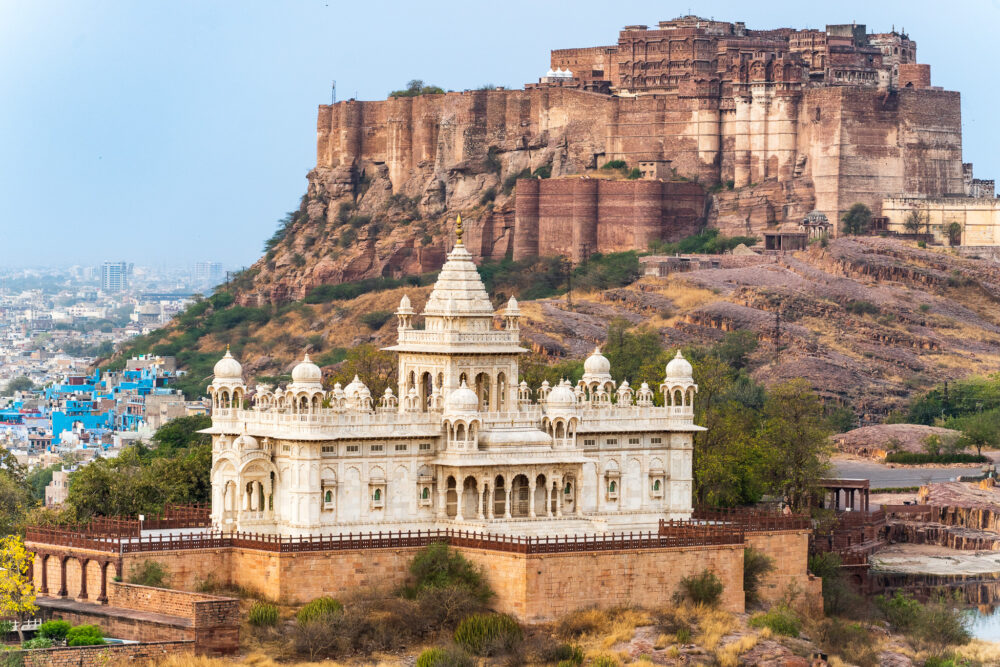
Your Beginner’s Guide to India: Hotels
Dollar for dollar, India had some of the worst hotels I stayed at in South/Southeast Asia.
That doesn’t mean excellent hotels don’t exist. You just probably have to spend significantly more to get them or bank on the rare unicorn budget accommodation.
You’ll find lots of $3 beds but that comes at a serious emotional price. We found our sweet spot to be about $10-$15 per night to get a very decent room with breakfast included. Anything less than that and we were compromising with something. Usually the bathroom. They can be absolutely heinous. These really cheap hostels in major cities like Mumbai can also be filled with people who work in India’s call centers. This means they will have horrible hours and come and go at all times of the night.
I always use Booking.com to find hotels & guesthouses in India with reviews I trust.
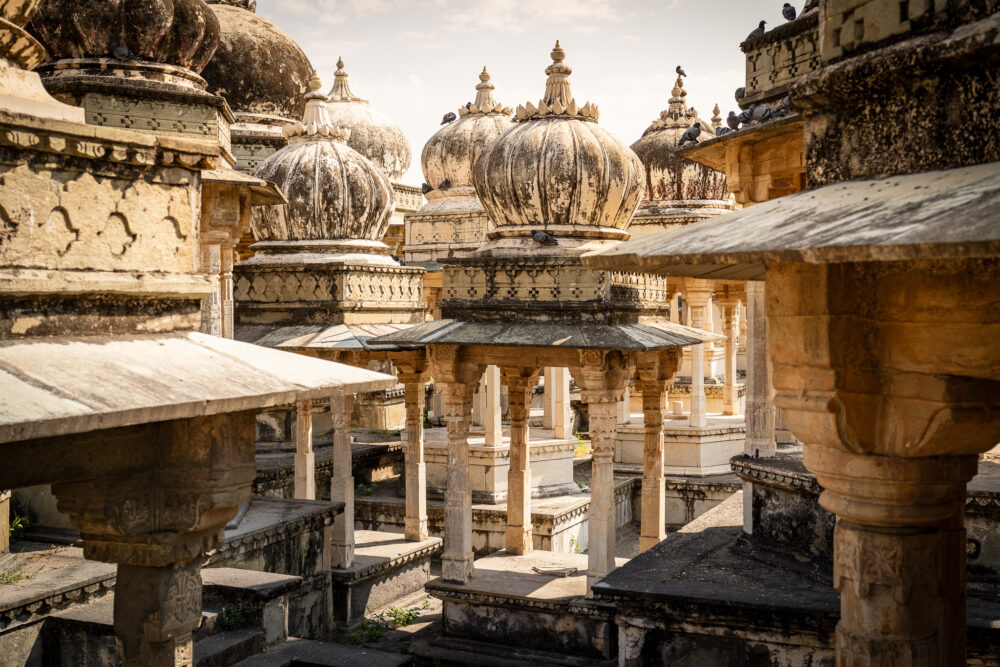
Quick Tips for Finding Good Places to Stay in India
- Try guesthouses over hotels and hostels for some of the cleanest places to stay.
- Don’t worry too much about booking in advance. You will usually get a better deal if you book online however.
- Free breakfast in India isn’t usually worthwhile. It’s not like Indonesia where you’re blessed with Nasi Goreng and Banana Pancakes every day.
- Hot water is not something you should expect. Often, in more off-the-beaten-path towns, you get a bucket shower and nothing more. Be sure you pack your own towel.
- Read reviews carefully. Try to look for travelers similar to you in age/nationality in the comments. This is the single best way to determine what the hotel is like NOW not when it opened 20 years ago.
- Don’t ever take a hotel recommendation from a taxi driver. This is likely a scam.
Your Beginner’s Guide to India: Eating
As I have repeatedly mentioned, Indian cuisine is my favorite cuisine in the world! Be bold and dig in—you won’t be disappointed in the new dishes you discover.

Read More: What to eat in Rajasthan, India & The best street food tour in all of Mumbai.
Good News! India is one of the most vegetarian-friendly countries in the world. A restaurant will be labeled non-veg if it serves meat, rather than the other way around. The world’s only 100% vegetarian McDonald’s is located in Amritsar, India. Not that you should waste your precious meals at McDonald’s, but it’s still an interesting fact.
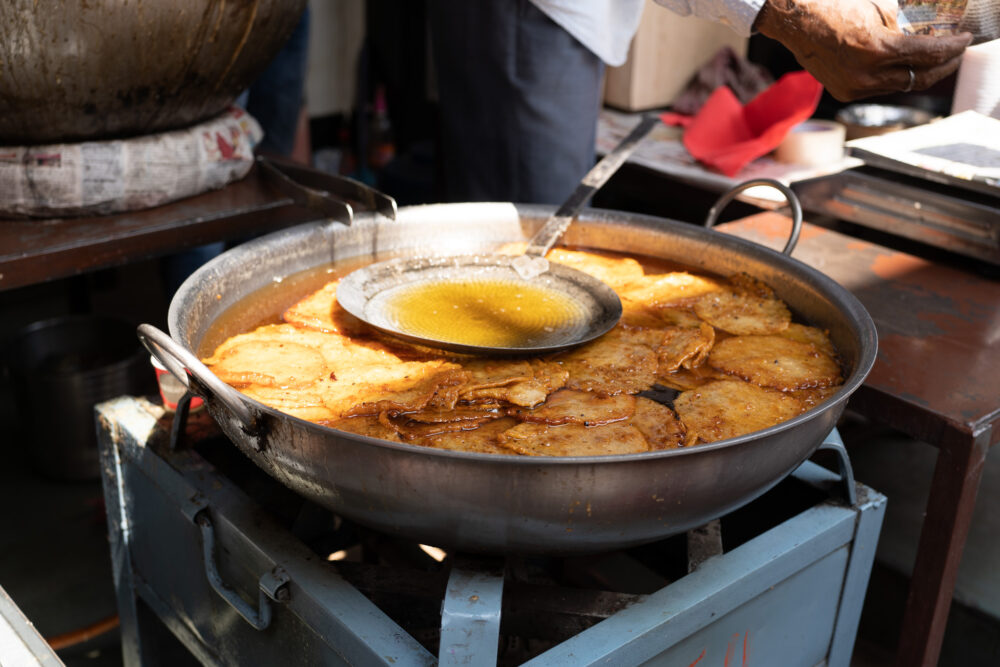
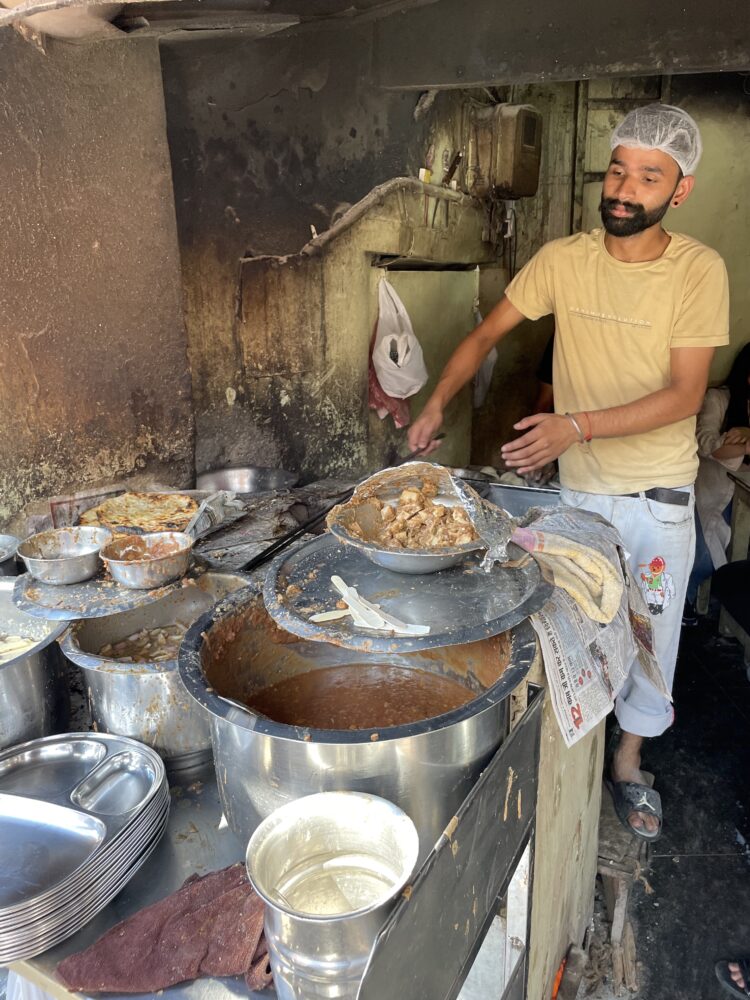
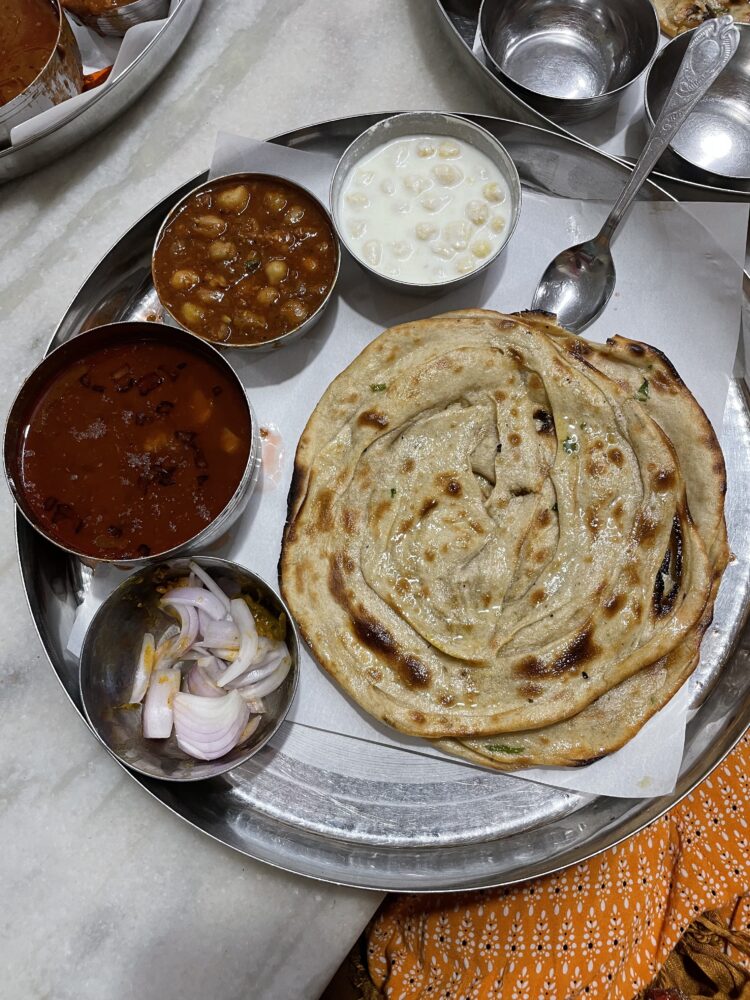
Quick Tips For Eating in India
- Most meals are eaten with hands. Restaurants have sinks where you can wash up both before and after your meal.
- Thali is a great way to get a sampling of the regional dishes without committing to any one thing.
- Street food is not to be feared. When it’s cooked right in front of you or busy, it’s probably one of the safest things for you to ingest.
- Do have all your vaccinations before you head to India. Cholera, Typhoid, Diphtheria, and Giardia are all fairly common illnesses passed through contaminated food here.
- Eat at meal times. This is the best way to guarantee your food will be freshly made.
Nervous About Street Food? But Still Want To Try It.
Take a tour with my favorite company and a longtime partner of mine, A Chef’s Tour. The reason I like them so much is that they focus on culturally important food rather than simply “the most popular.” You’ll be able to find the most popular restaurants and food stands from the lines and blog posts online. It’s the hidden gems and historical meals (that are also incredibly tasty) that set this tour company apart. This is because it’s led by local chefs. People who intimately understand the cuisine of the region. Here are their India tour offerings.
Your Beginner’s Guide to India: Getting Around
Transportation might be my least favorite thing about this country. But it’s not really India’s fault. The country is, after all, the size of a continent.
Transportation Options in India
When it comes to getting from city to city in India, you essentially have 4 options. You hire a private driver, drive yourself, take a bus, or take a train. I’ll also cover Richshaws below and why you don’t use them between cities.
Driving Yourself
Unless you are a very experienced motorcycler or traveler, I do not recommend driving yourself in India. I did in Pakistan. And Mongolia. As well as several other destinations, but I DID NOT in India. This is partially because the roads are crazy but mostly because the sheer distance between each destination is so long that you’ll be driving for days/through the night to reach them. Unless you’re in India for 6 months or more, this is likely not a great option.
I would only recommend it to travelers who are planning to stay predominately in one region of India.
Hiring a Private Driver
If you have the money or are a small group of travelers this is an option for you. You can hire a driver for around $50-$100 per day. Just know you’ll likely want to end up in the same city you start in and take the time to find a driver you like and trust.
Rickshaw
This is used for travel WITHIN cities. Not often between them.
It should cost around 15 rupees per km. Outside of major cities, you will have a hard time getting them to agree to meter. It’s often best to agree to a price beforehand anyway, as they will often jerry-rig the meter to show something ridiculous unless you can physically see the meter in front of you. Unless it’s a very long ride, you shouldn’t pay more than 150 rupees.
Now let’s get to the most popular forms of transport…trains and buses.
Trains vs. Buses: Which is Best?
This probably comes down to personal preference, but there are a few things to consider in India. Pricing on both options is very similar, and the booking process is equally a hassle.
The Argument for Buses in India
Pros of Buses: Usually the fastest and most direct way to a city. Buses also connect even the smallest towns in India. There is ALWAYS a bus.
Cons of Buses: Indian highways are perilous death traps. Drivers sometimes drive drunk (reportedly), and many drive like absolute maniacs. Sleeper buses are extraordinarily uncomfortable. Especially if you are solo. Bunks are for two people on one side and singles on the other, and if the singles are full — you will be put next to another passenger to share the “not quite full-size bed” with no barrier between you. No bathrooms or food are offered on board, but they often stop once.

The biggest problem with buses in India is that the pick-up locations are usually just a random side of the road. Sometimes you’re given an address, sometimes a business name, sometimes a really ambiguous road name. But you ARE given the bus driver’s phone number. You’ll likely have to call him to make sure you’re in the right place. It’s a very weird system.
The Argument for Trains in India
Pros of Trains: Lots of variety in seating style (sleeper, AC, Chair Cars, 1st class, 3rd class— I’ll get to all of them later). You can pee whenever you want and people roam about selling food and chai for the duration of the ride. You can also order food from restaurants on the Ixigo app and delivery people will run onto the train at stops and give you your food in exchange for cash. Even with your American credit card.
Cons of Trains: You have to book them further in advance. They don’t connect all destinations in India. They are usually a little delayed and therefore a slightly slower method of transport. It’s very difficult to book a train at the actual train prices as a foreign traveler. I also find most of the sleeper options to be very uncomfortable. I actually prefer the chair cars when I can get them.
Now the hard part.
Booking Buses in India
There are a few ways you can book a bus in India.
- Go directly to the bus station. Rarely an easy or convenient feat as the stations are usually on the outskirts of town.
- Go to a “Travel Agent” and let them book for you for a small fee.
- Book via an app like Asia.12.Go where the fees are straightforward and small.
We tried many methods and found that the official agents often got us the best deal. But we made sure to look at the apps first, so we knew what we should request and how much to expect to pay before we went.
Booking Trains in India
Here I’m going to direct you to Seat 61.
This is the single most thorough guide to booking train tickets anywhere in the world. The problem with booking trains in India as a foreigner is that the official train website requires you to get an IRCRC number from the railway’s website. Sometimes, they just stop issuing them.

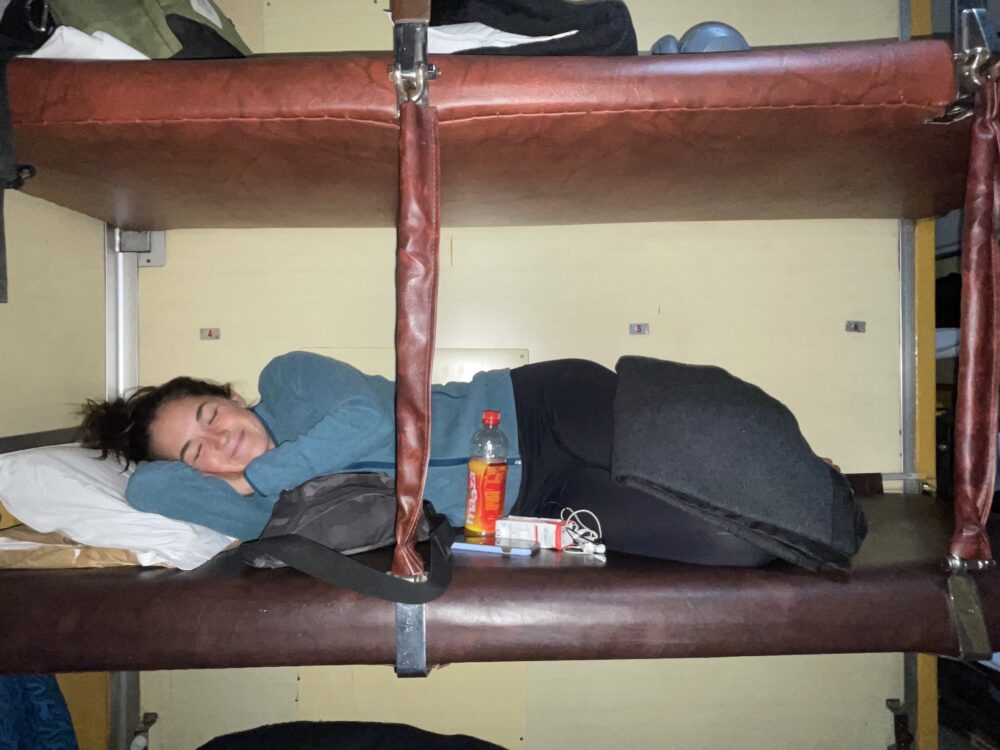
What are the best bang for your buck train seats in India? 2 A/C Sleeper. If you’re looking for comfort, this is the best option. Ideally, as a couple, you want the same side as well. This way you can set up the beds when YOU want rather than when someone else demands to sleep in the middle of the day.
Here are some things you should be aware of when it comes to booking trains…
- Most trains are booked 1-2 weeks in advance, so only the prepared traveler gets to ride them.
- Tatkal Tickets are released the day before the train departs. This is for emergency situations (or unprepared people like myself). Agents know the exact times these tickets are released, so booking through them is best for last-minute reservations.
- Ease My Trip was the best app we used for booking trains. Basically, no matter what, you’ll have to pay a small commission as a booking fee unless you go directly to the train station. But because you have to book so far in advance, this can be difficult to do.
- If you don’t want to spring for a 2 A/C sleeper (the best for long rides) or a chair car (the best for medium-short rides), then the middle and lower bunks on the same side of a 3 A/C car are the best ones. This way again…you can choose whether you want to sleep or sit.
- Be sure to download the Indian Railway App IRCTC so you can order meals while on the train. Do it early on so you don’t miss the best meal stops. Be sure to have cash ready for them when they run on the car.
- Chai wallahs and people selling snacks will roam about all the time. Be sure you have cash before you board.

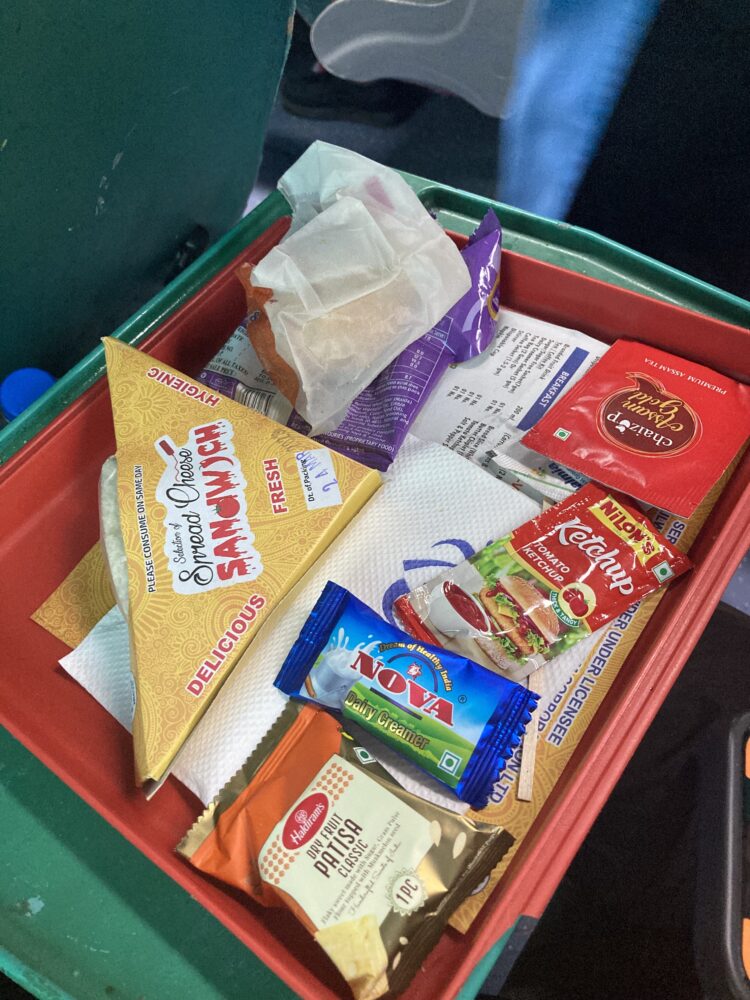
Indian Customs from the Eyes of a Traveler
These are my observations from spending a considerable amount of time in the country. Personal opinions if you will. So don’t get offended if this is not your experience.
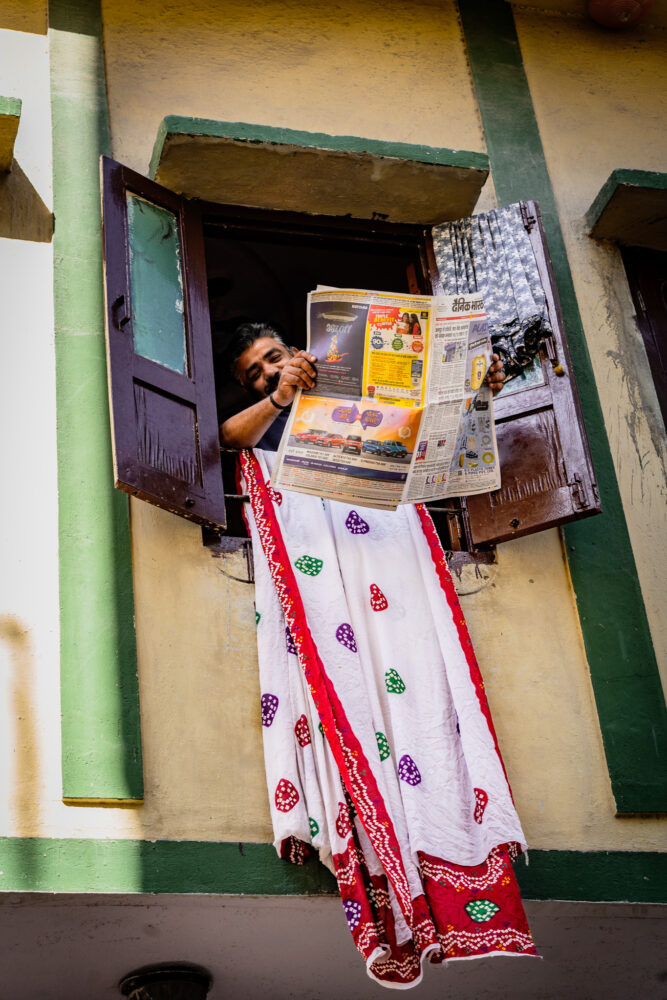
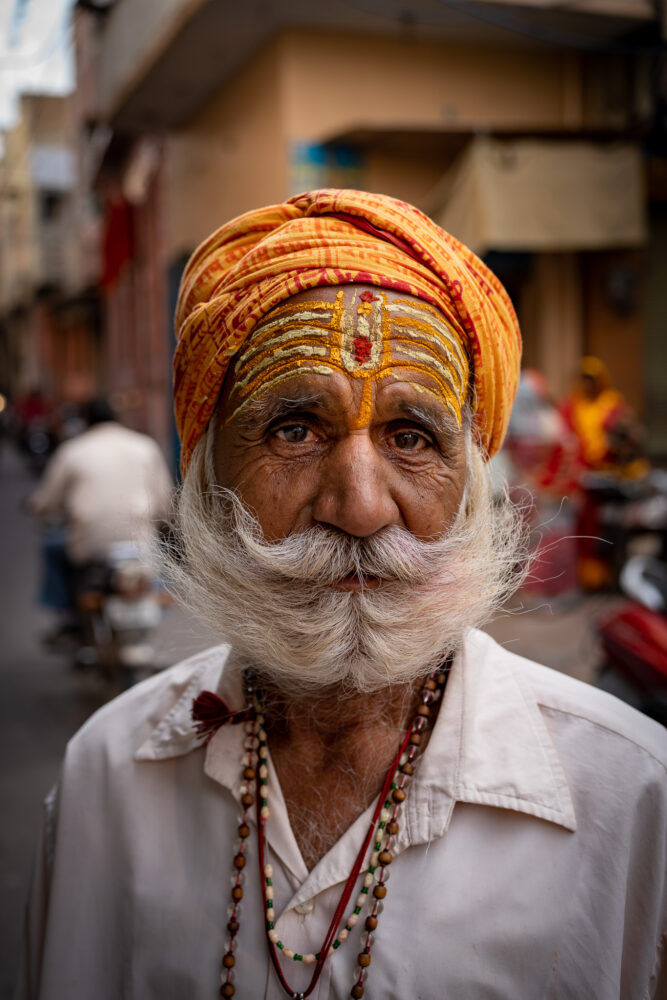
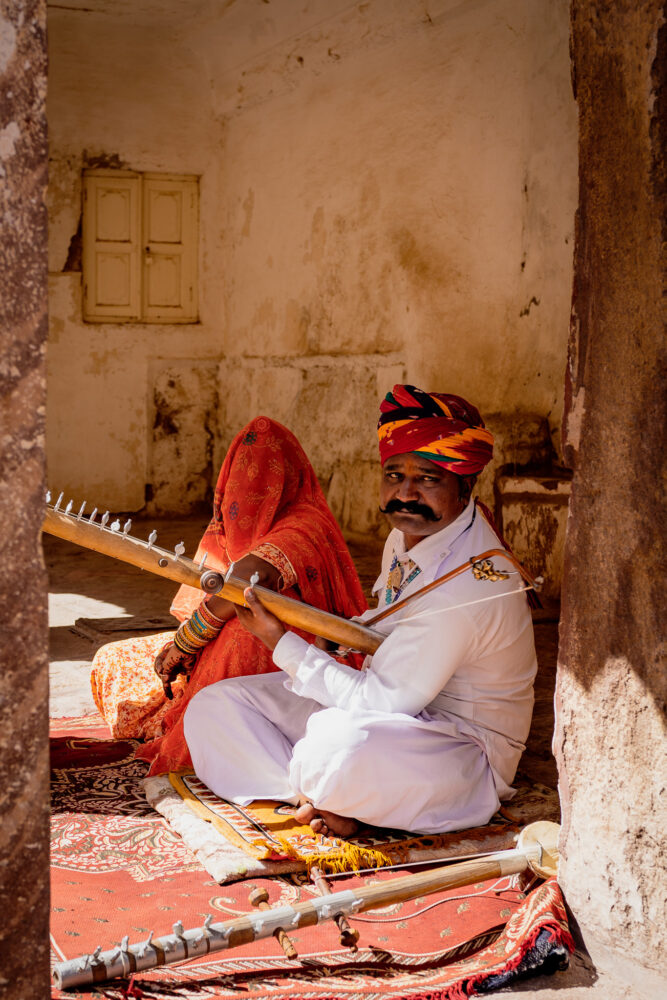
1. Yelling is permitted.
Indian culture is far more confrontational than the rest of the Asian continent. In Southeast Asia — saving face is all that matters. You would never get into an argument in public with a stranger in Thailand. Ever. India — it’s much more acceptable and you’ll have more success in the country if you are firm, direct, and say it like it is.
Assert yourself. Learn to insist. And understand that the ambiguous Indian head wobble (a gesture that means neither yes nor no) is essentially meaningless, but you’ll never get a more clear answer than that. You’ll just have to move on to ask someone else.
2. The Scams Aren’t As Bad as Elsewhere in the World
While India gets a bad rap for scams and overly aggressive touts, I find them to be more opportunistic than overtly malicious. And they definitely aren’t as aggressive as Egypt’s scammers. Here they will usually move on to the next target after a quick no thanks.
3. The Hospitality is Unrivaled.
Indians are very welcoming of guests. Sharing food, inviting strangers into their homes for tea, and eager to swap contact info. Sometimes it’s too welcoming. People can come on really strong. You’ll get a lot of attention if you go anywhere slightly off the beaten path. I’ve been chased down the street by people trying to get more photos. It’s all well-meaning though.
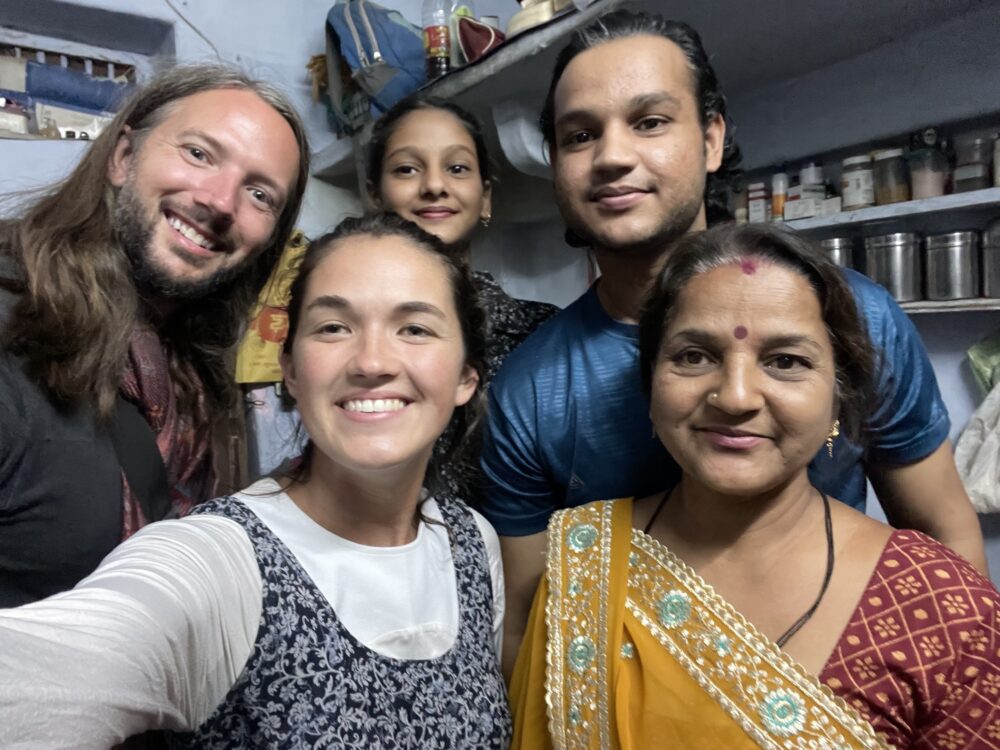
You should accept some invitations for tea and dinner. Take people up on their kindness and you’ll make genuine friends in the country.
4. Budget Travelers Should Expect the Bare Minimum
I’m never one to advocate for paying top dollar when it comes to accommodation. But in India, budget lodging can be pretty brutal. Mostly because cleanliness is the first thing sacrificed, if not thrown totally out the window. I often found a “do only the bare minimum” mentality when attempting to truly budget travel in India. It’s not a place you should expect to get LUXURY for cheap.
4 Random Tips to Keep You Sane on Your First Visit to India
Here are a handful of random nuggets of advice that didn’t fit elsewhere in this beginner’s guide to India that will help you navigate India like a pro.
1. Mid-day Naps
Learn to love them. This might seem like a weird suggestion but the mid-day decompress and hotel hang really kept me sane during my time in India. This is when it’s hottest out as well and wandering the streets is least desirable.
2. Understand that everything takes far longer in India
You might think you can plan to see 5 things spread out across Mumbai in a single day, but you would be wrong. Getting around just takes time. Be sure to allow extra time in your day for navigating the issues that inevitably arise.
You could spend a lifetime in India and not see it all. Not even close.
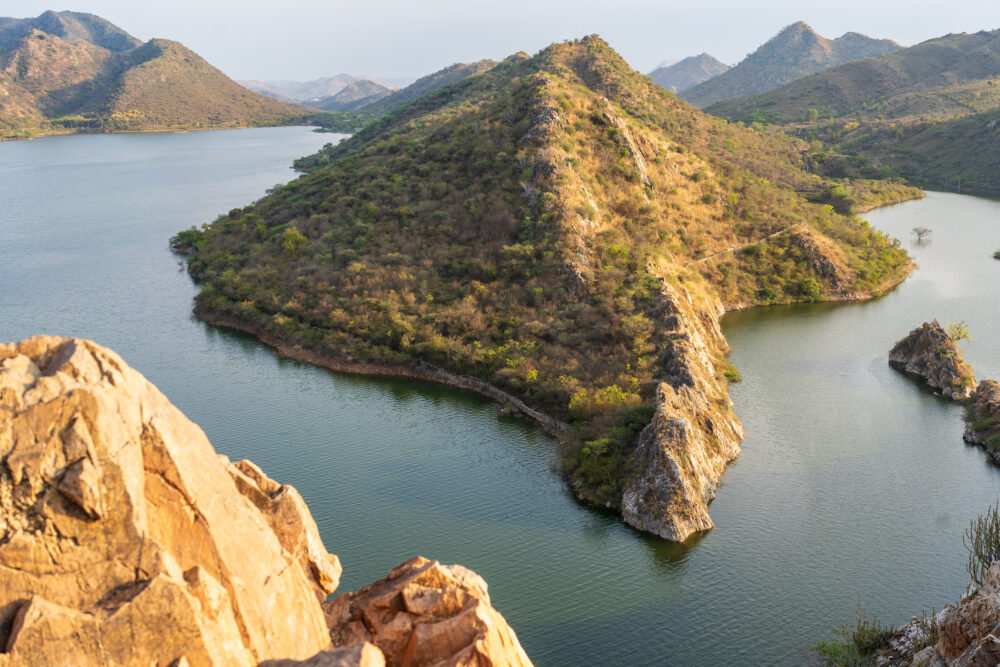
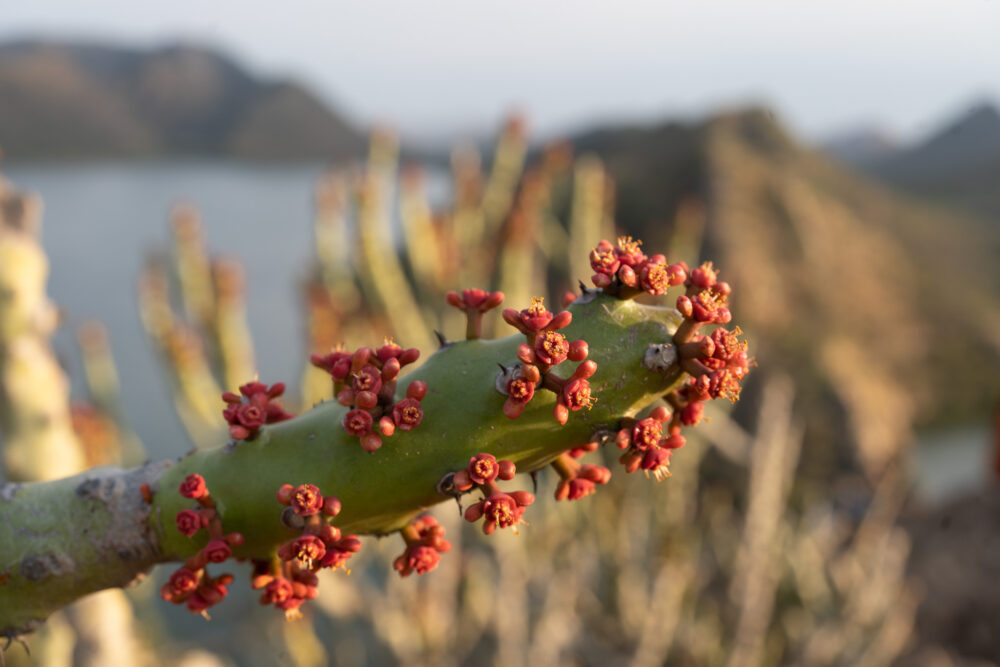
3. Couchsurfing can be the best way to see India
No one can help you navigate the ins and outs of India like a local. Couchsurfing can be an incredible way to connect with people on a deeper level. You’ll get a cleaner place to stay, local recommendations, and new friends.
4. Selfies + Stares
Especially in remote regions of India foreigners get a lot of attention. People will commonly ask “where you are from”, “what is your name”? And of course — “selfie”. Usually, it was easiest to just take a quick one and move on with a smile. Sometimes, in a crowd, you will get bombarded with selfies and will have to give up and run away. Avoid giving out your WhatsApp number to people you had very little interaction with, because occasionally, you’ll get a new friend who will call you repeatedly at all hours of the night. The same goes for the other social media apps.
I’m not someone who minds the selfies particularly. But it can be exhausting to take hundreds of them.
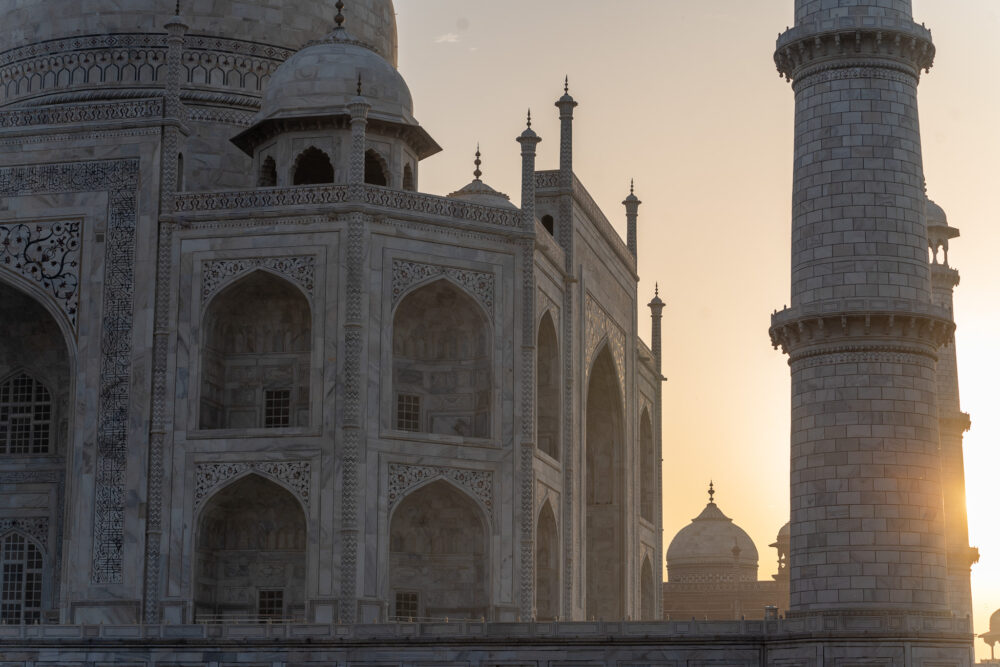
Finally: The Dreaded Delhi Belly + Hospital Tips
I’ve been to the hospital in India more times than I like to admit. Indian food is my favorite, but it also apparently hates me. It hates a lot of people. I would venture to guess that in all my travels and all the people we’ve encountered…India doles out the most food poisoning.
To avoid tummy troubles…
- Drink lassi as often as you can.
- Stay hydrated with mineral water, always filtered or bottled. All of India’s bottled water is usually mineral.
- Don’t avoid street food thinking you are safe. Most of the time it was restaurants that got me.
Once you fall ill…
- Electrolyte drinks and powder will be your saving grace. You usually want to watch out for dehydration.
- Hopefully, you brought your own Pepto-Bismol because they don’t have it in India and you’ll likely need it.
- A “Medical Store” is a pharmacy. This is the first line of defense if you are sick and you feel like you know what you need to be well. They will have everything from hardcore antibiotics to painkillers available over the counter for under a dollar. Unfortunately, because they will give you anything and everything, you should research what you want — screenshot the name (scientific name) and photo of it and take it in. Many of the pills will say on the package you need a prescription– but that’s not how they operate in India.
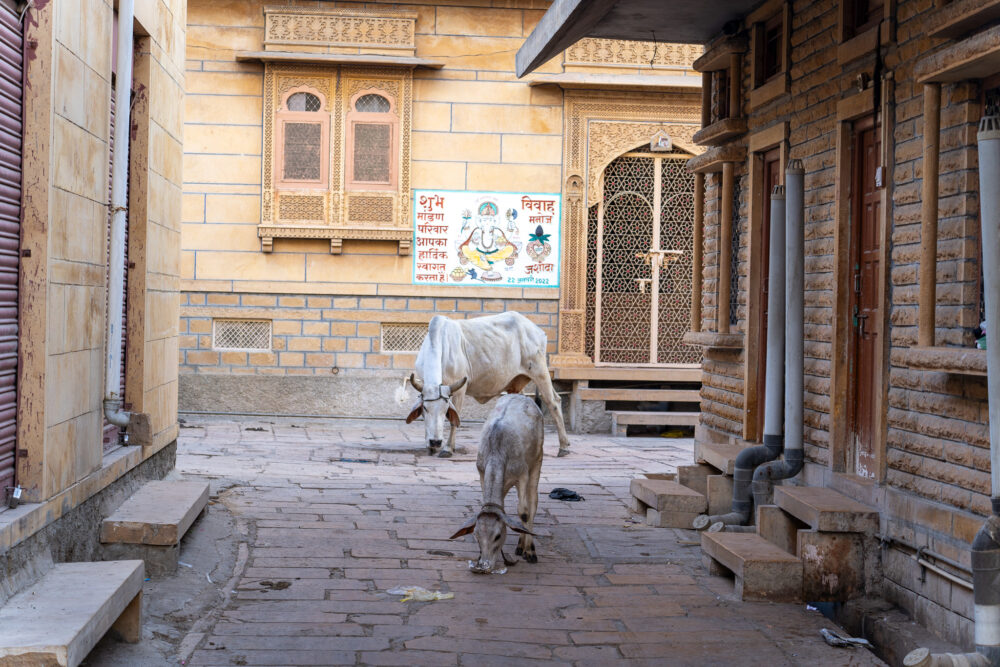
Still not better? It’s hospital time.
Hospitals are very affordable in India when compared to the United States. But honestly, what healthcare system isn’t super affordable when compared to the United States? You have two kinds of hospitals to choose from: Government hospitals and private hospitals. If you’re just looking for healthcare, Government hospitals are free but not as good care-wise typically. Private hospitals err on the other side, and while the care is good, you’re more likely to be kept overnight or overcharged. Even so, I’ve never spent more than $100 on an overnight stay.
If you’re reading this right now you are SUPER dedicated to travel in India. This beginner’s guide to India was a huge brain dump of information and got a little out of control in size. But these are the tips and general info I have gathered from many months spent traveling in India. Valuable first-hand advice that a first-time traveler to India needs in order to make the most of their (probably short) visit to one of the most beautiful and culturally diverse countries on this planet. Let me and fellow travelers know in the comments if there is anything you would like to add to this list!
Save This Beginner’s Guide to India For Later!
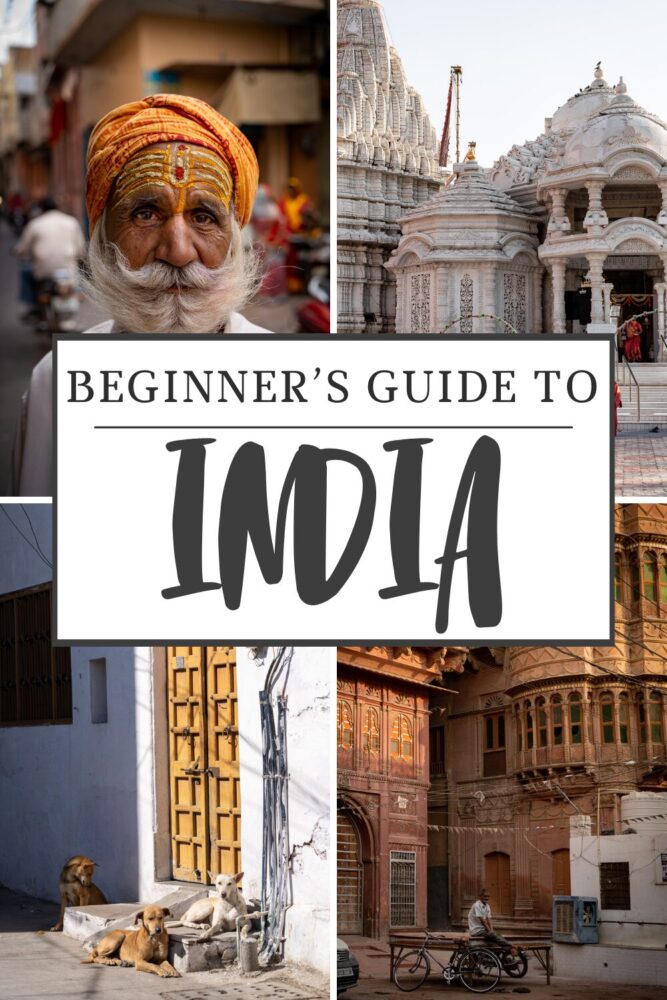
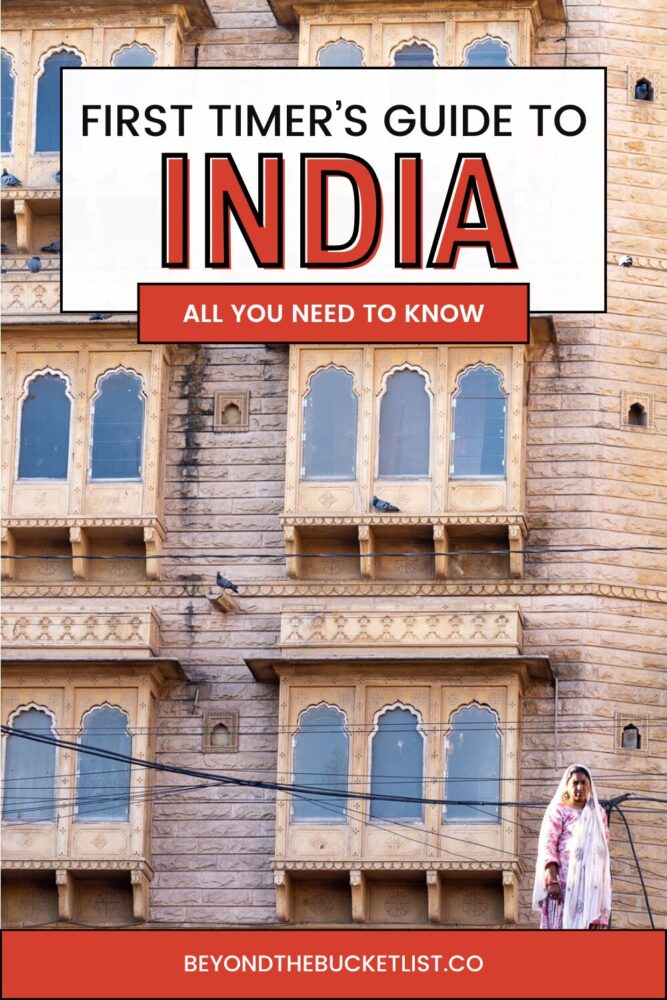
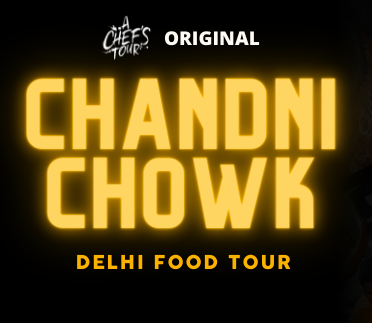


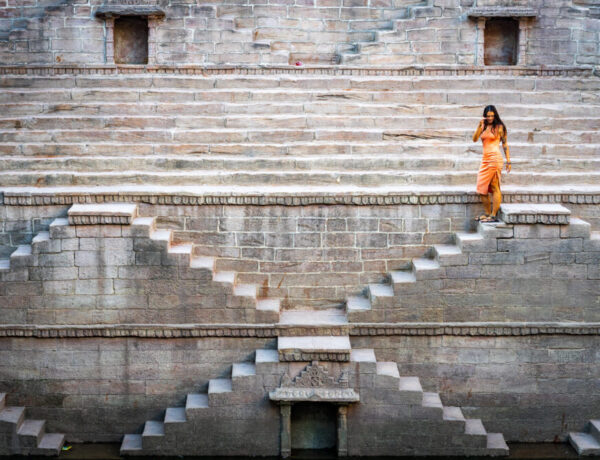




No Comments